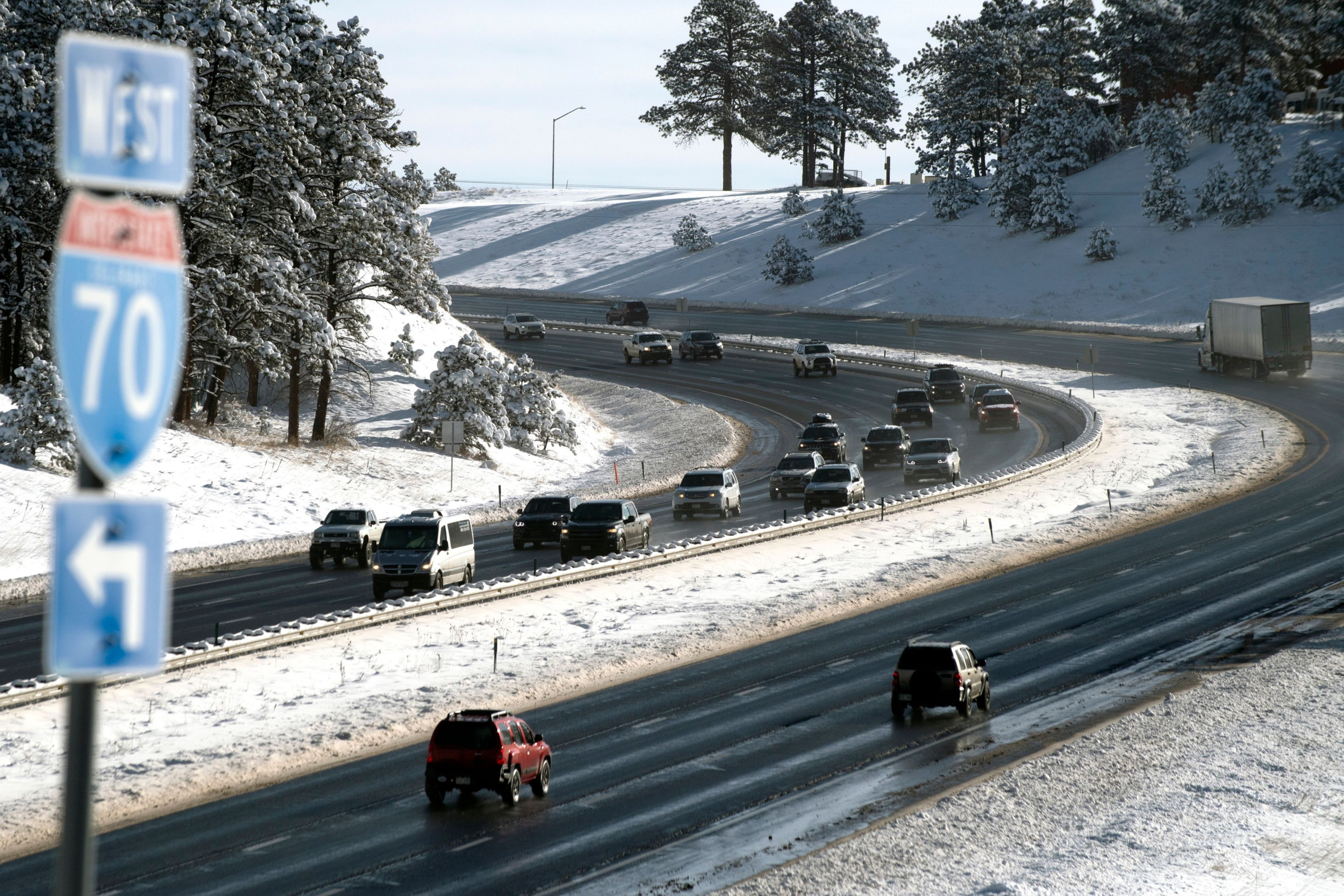Winter is tightening its icy grip across much of the country, with a string of states slapped with weather warnings this week amid fears of treacherous conditions.
Reduced visibility and heavy snow—up to 6 feet of snow accumulation in some parts—are forecast just days away from Thanksgiving. And the National Weather Service has issued warnings for 13 states: Colorado, California, Nevada, Utah, Wyoming, Vermont, Michigan, Alaska, New York, Idaho, Maine, New Hampshire and New Mexico.
It has been a tough winter so far for many Americans, who have been battered with a string of storms. Last week, two powerful weather systems combined forces, when an atmospheric river, or water vapor in the sky, and a bomb cyclone, namely a rapid drop in pressure, collided to whip up a fierce winter storm that saw those on higher ground pounded with snow. Newsweek has compiled experts' safety tips for winter travelers because the hazardous conditions look set to continue, judging by this week's forecast.

Colorado has a string of warnings covering most of the mountains and areas of higher ground in the state. For example, the northern and southern Sangre de Cristo Mountains could see up to 26 inches of snow accumulating, with winds as high as 55 mph. "Travel could be very difficult to impossible. Areas of blowing snow could significantly reduce visibility. Strong winds could cause damage to trees and power lines," the NWS said. The numerous warnings are being updated frequently, so residents of Colorado should check their local weather reports for the most up-to-date information.
California has also been hit with warnings for those living or traveling on higher ground. The Sierra Nevada could see snow of up to 6 feet, according to NWS forecasters. Roads and bridges "will likely become slick and hazardous," and travel may become "difficult to impossible."
The NWS's branch in Reno, Nevada, also issued a warning for the Greater Lake Tahoe area, which stretches into the state from its border with California. Residents of Stateline and Glenbrook in Nevada are affected by the warning.
Utah also has a warning in place for the Wasatch Mountains, Western Uinta Mountains, Wasatch Plateau/Book Cliffs, Central Mountains, and Southern Mountains. Snow of up to 20 inches—or up 36 inches for the Manti Skyline and Tushar Mountains—means that: "Those with travel plans ahead of the Thanksgiving holiday over mountain passes should be prepared for potential travel difficulties." La Sal and Abajo Mountains are also covered by the warnings.
Over in Idaho, snow of up to 12 inches is expected in the Bear River Range, although this could go even higher "in the backcountry above pass level." The NWS also warned that "visibility will be poor at times" and the "hazardous conditions could impact the Tuesday morning and evening commutes."
In Wyoming, the Snowy Range will see snow of up to 24 inches accumulating and winds as high as 35 mph. Residents should check local up-to-date forecasts to see if other higher areas are hit with weather warnings, too.
Portions of northern New York and central, northeast, northwest, and southern Vermont are subject to a weather warning as well. Rain, and snow in higher ground, is expected, with ice due to accumulate, resulting in "hazardous conditions."
Chippewa and Mackinac counties in Michigan are also all covered by a warning of hazardous conditions caused by snowy roads. Other counties around the state may also be affected by weather warnings later, so you should check local reports frequently.
The upper Chena River Valley in Alaska has been told to brace for snow accumulations of around 3 inches, which will make already snowy areas yet more hazardous while traveling. Higher elevations, such as the White Mountains and high ground around the Yukon River, will be affected by similar conditions.
Portions of west central and western Maine and central and northern New Hampshire are covered by an NWS weather warning until 1 p.m. on Tuesday. "Although ice amounts will be light, the freezing rain is expected to fall on cold bare pavement," it reads. "This will lead to the potential for glaze ice formation on untreated roads, leading to extremely dangerous travel conditions. Even light snowfall amounts can accumulate on roads and cause dangerous driving conditions due to snow covered roads. The hazardous conditions could impact the Tuesday morning commute."
The Tusas Mountains in New Mexico are also covered by weather warnings. "Tire chains may be necessary if traveling through mountain passes," the NWS says.
Residents in all states should check the local weather reports frequently for the most up-to-date information, including weather warnings and travel advice.



















 English (US) ·
English (US) ·